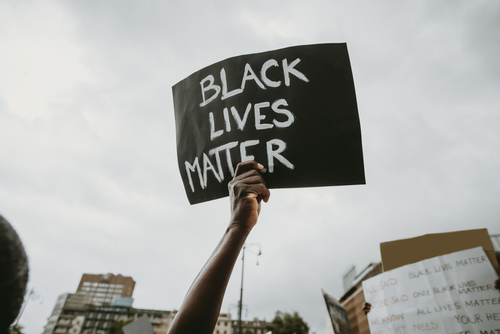San Diego’s Comic-Con festival community faced a minor setback after an exhibit, honoring one of the iconic comic strip’s most loveable characters.
Last week, to celebrate the centennial year of Charles Schulz, San Diego Comic-Con 2022 highlighted The Armstrong Project: Peanuts Worldwide– an initiative to support the work of up-and-coming Black animators.
At SDCC, vandals “deliberately smashed” the window of an exhibit across the street from the Convention Center. The display was initiated by Peanuts Worldwide, an organization which provides scholarship opportunities to young Black artists through donations at Howard and Hampton Universities.
Despite the defacement, Knubia’s Chief Creative Officer, URAEUS, and the platform’s Chief Operating Officer, Carl Varnado, the founders of Black Heroes Matter, were undeterred from their mission.
“The target wasn’t just Franklin, but a program, inspired by a Black comic strip character and a Black cartoonist, which uplifts and empowers young Black artists,” URAEUS tells TheHub.news.
“I organized the Flash Mob and was on the scene when workers at The Armstrong Project were sweeping up the shattered glass from the vandalized window,” he shared with us. “I think there are a lot of people in this country who would see Franklin as a stain on an all-American institution, The Peanuts, particularly in a time when diversity and inclusion are viewed as negatives. His novel backstory makes him the poster child for inclusion.”

Rather than cancel the event, a decision was made to shift the location of the meet-up to the Armstrong Project exhibit “to lend support and to make a clear statement that solidarity and creative power will always be stronger than racism and intolerance.”
A powerful moment, considering Black Heroes Matter was birthed at the event... and the community came out in droves.
“The Flash Mob vibe is always wonderful. It’s like a family reunion. Most of us in the Black creative space know each other, it’s not really that big a circle, unfortunately. But we’re situated in different parts of the country and world. The meet-up allows us to come together and fellowship, and to meet new folks who find us while at SDCC. It’s a chance to show our strength in numbers, both to ourselves and the others looking on,” URAEUS adds. “The Flash Mob was never intended to be at The Armstrong Project, that was just the universe and the Ancestors working their magic. We saw an issue that needed to be addressed and moved with a certain swiftness to address it in the best way we could think of,” he concludes. “Everything turned out exactly as it was meant to. It was beautiful.”
Several industry leaders, including Prentice Penny (Emmy nominated showrunner of HBO’s “Insecure”), Carl Jones (co-creator of “The Boondocks”), Bruce Smith (creator of “The Proud Family”) and Robb Armstrong (co-founder of The Armstrong Project), showed up to support.
Who is Franklin Armstrong?
Franklin’s roots trace back to the letter penned to Schulz in 1968 by schoolteacher Harriet Glickman, urging the “Peanuts” creator to add an African-American character to the lineup in the wake of the assassination of civil rights leader Martin Luther King Jr.
“I am well aware of the very long and tortuous road ahead,” Glickman wrote. “I’m sure one doesn’t make radical changes in so important an institution without a lot of shock waves from syndicates, clients, etc. You have, however, a stature and reputation which can withstand a great deal.”
Schulz was moved by Glickman’s impassioned plea, and Franklin was born.
A History of Controversy
In November, the Peanuts character made headlines following a special airing of “A Charlie Brown Thanksgiving.”
In the special, Snoopy and Woodstock prepare toast and popcorn as the main dish, but Franklin, the only Black character, sits by himself on one side of a Thanksgiving table. Viewers accused Schulz of racism and of intentionally separating Franklin from the rest of the gang.
“Today this would not be acceptable,” Darnell Hunt, dean of social sciences and professor of sociology and African American studies at UCLA, told Yahoo Life at the time. “It really does speak to the need for more inclusive creators and storytellers behind the scenes who produce these images,” he adds. “That’s why it’s so important to have people in the writers’ room and in production who might be more sensitive to these issues.”
Schulz’s widow, Jean Schulz, denied the claims of racism to the publication.
“The scene would not have had nothing to do with [Charles Schulz], because it was purely the animators and the directors working on it,” Jean said. “The director parcels out the scenes to the animators, and the animators who drew that scene aren’t alive anymore or we don’t know how to find them. The [controversy] first popped up a couple of years ago. I’ve probably watched the special a dozen times, and I hadn’t noticed it. But I wouldn’t notice it: It’s to be noticed now.”








